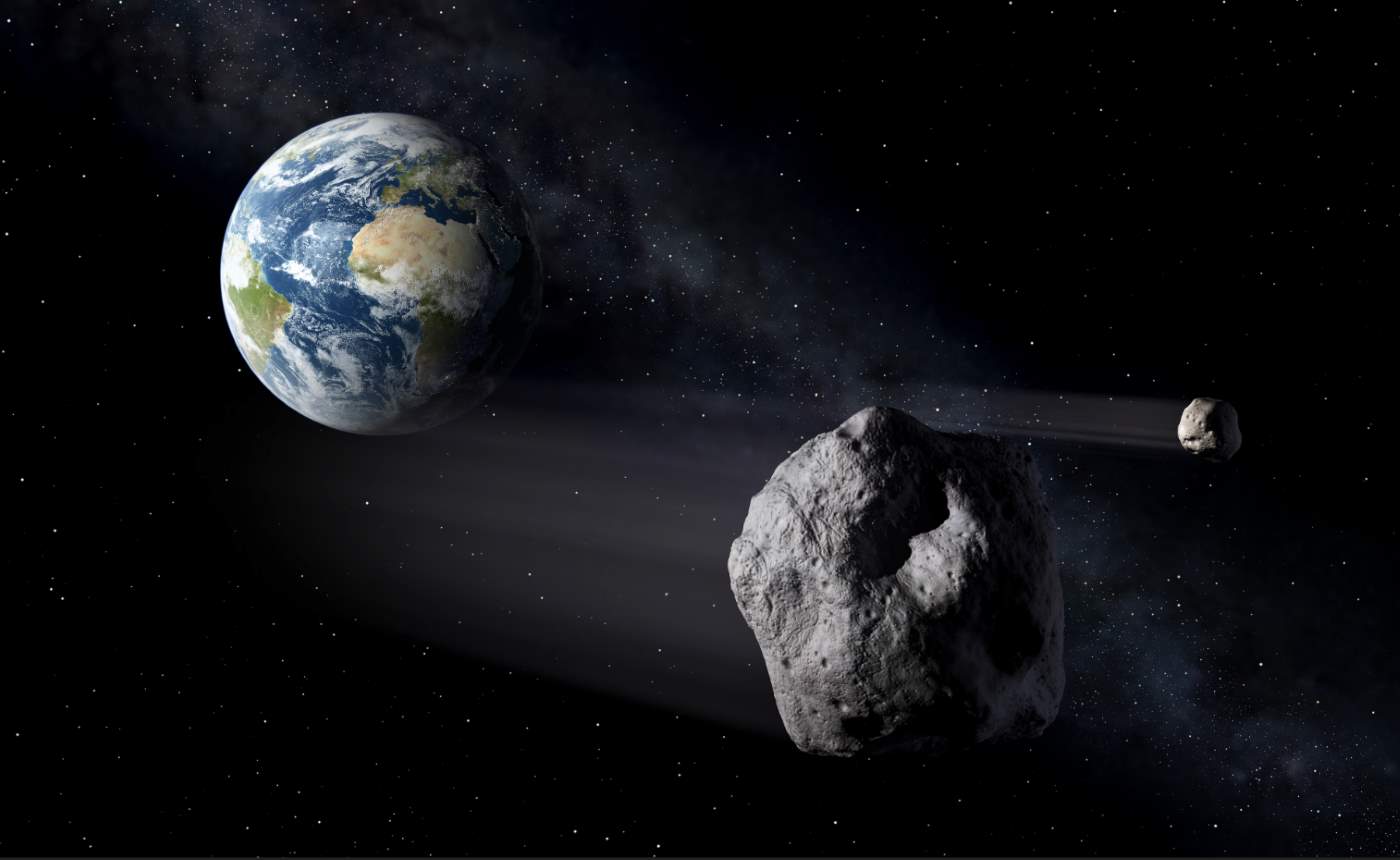Hint: they are all space rocks. But, there are some differences. The biggest difference between an asteroid and a comet, for example, is what they are made of.
What is an Asteroid?
Asteroids are minor planets or rocky objects smaller than planets. There are millions of asteroids (most of them orbit in the asteroid belt between the orbits of Mars and Jupiter), many thought to be the shattered remnants of planetesimals, bodies within the young Sun’s solar nebula that never grew large enough to become planets. In other words, they are leftovers from the formation of our solar system. The size of asteroids varies greatly, the largest is almost 1,000 km (625 mi) across.

What is a Comet?
Comets are also formed around the same time as asteroids and they are leftovers from the formation of our Solar System too. However, as mentioned above, the biggest difference between an asteroid and a comet is what they are made of. Comets are icy bodies, unlike rocky asteroids. Because they formed at farther distances from the Sun than the asteroids.

Related: Spectacular comet photo from the ISS
Asteroids formed toward the inner regions of our solar system where temperatures were hotter. As a result, only rock or metal could remain solid without melting. temperatures were hotter and thus only rock or metal could remain solid without melting. Comets have a solid, core structure which is known as the nucleus. Cometary nuclei are composed of an amalgamation of rock, dust, water ice, frozen carbon dioxide, carbon monoxide, methane, and ammonia. That’s why they are popularly described as “dirty snowballs”.
Comets also have an extended, gravitationally unbound atmosphere surrounding their central nucleus. This atmosphere has parts termed the coma (the central part immediately surrounding the nucleus) and the tail (a typically linear section consisting of dust or gas blown out from the coma by the Sun’s light pressure or out-streaming solar wind plasma). However, extinct comets that have passed close to the Sun many times have lost nearly all of their volatile ice and dust and may come to resemble small asteroids.
The number of known comets (4,017, as of May 2018, according to the Minor Planet Center) But, there are likely more than a trillion comets orbiting our Sun in the Kuiper Belt and even more distant Oort Cloud.
When a comet passes close to the Sun, warms and begins to release gases, a process called outgassing. This produces a visible atmosphere or coma, and sometimes also a tail, which may stretch one astronomical unit. If sufficiently bright, a comet may be seen from the Earth without the aid of a telescope.

Probably the most famous comet, Halley’s Comet or Comet Halley, officially designated 1P/Halley, is a short-period comet visible from Earth every 74–79 years. It is the only known short-period comet that is regularly visible to the naked eye from Earth, and the only naked-eye comet that might appear twice in a human lifetime. Halley last appeared in the inner parts of the Solar System in 1986 and will next appear in mid-2061. The comet’s periodicity was first determined in 1705 by English astronomer Edmond Halley, after whom it is now named.
What is a Meteoroid, a Meteor, and a Meteorite?
Like asteroids, meteoroids are rocky or metallic bodies in outer space, but they are significantly smaller than asteroids. There is no well-defined size range for a meteoroid, their range in size is from small grains to one-kilometer-wide objects. Objects smaller than this are classified as micrometeoroids or space dust. Most meteoroids are fragments of comets or asteroids.
If a meteoroid comes close enough to Earth and enters the Earth’s atmosphere, it vaporizes and produces the visual phenomenon called a meteor: a beautiful streak of light in the sky. Because of their appearance, these streaks of light some people call meteors “shooting stars.” But meteors are not stars at all, they are just bits of rock. Sometimes, meteoroids explode in the Earth’s atmosphere. However, if the meteoroid is small enough, it will not produce a meteor but will decelerate slowly enough to remain intact and then float gently to the Earth’s surface.
If the meteoroid is large enough, some fraction of it will survive the ablative entry through the atmosphere and hit the surface, sometimes at enormous speeds. This part of the meteoroid is then called a meteorite.

What is a Bolide?
If a meteor is extremely bright, then it’s called a bolide. One definition describes a bolide as a fireball reaching an apparent magnitude of -14 or brighter – more than twice as bright as the full moon. A superbolide is a bolide that reaches an apparent magnitude of -17 or brighter A superbolide can be brighter than the Sun, which has an apparent magnitude (m) of -26.74. The apparent magnitude (m) of a celestial object is a number that is a measure of its brightness as seen by an observer on Earth.
Sources
- “Asteroid, Meteor, Meteorite, and Comet: What’s the Difference?”, an article by “Everyday Einstein” Sabrina Stierwalt on the Scientific American website
- “What’s the Difference Between a Meteoroid, a Meteor, and a Meteorite?” on the Encyclopedia Britannica website, written by Jonathan Hogeback
- “What Is The Difference Between Asteroids And Comets?” by Nancy Atkinson on Universe Today
- Asteroid on Wikipedia
- Comet on Wikipedia
- Halley’s Comet on Wikipedia
- “Meteoroids – A Proposed Classification By Size” on the Australian Space Academy website
- “Asteroid or Meteor: What’s the difference?” on NASA Space Place
- Bolide on Wikipedia
- Moon Landings: All-Time List [1966-2025] - February 2, 2025
- What Is Max-Q and Why Is It Important During Rocket Launches? - January 16, 2025
- Top 10 Tallest Rockets Ever Launched [2025 Update] - January 16, 2025
